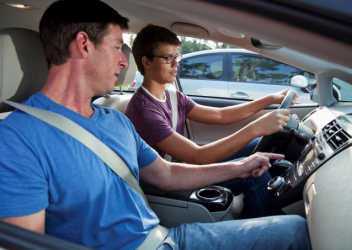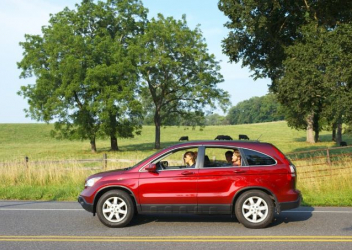Research In Action
Research In Action
Breadcrumb

Psychology has always been an interesting field to me simply because of how it is people-focused. When school was moved online due to Covid for my freshman year at Drexel University, I was disappointed. While I was grateful for the opportunity to learn more about the science and the way people are wired, I didn’t feel connected to the work no matter how much we discussed certain concepts or made PowerPoint presentations.
As I’ve gotten closer to my college graduation during the past year, figuring out what I want to do—not just with my major, but also with a lifelong career—has been difficult with a looming deadline. During my six-month co-op internship at the Center for Injury Research and Prevention (CIRP) at Children’s Hospital of Philadelphia (CHOP), I’ve been able to pursue and explore psychology in a hands-on way, something I never had the opportunity to pursue at school. I’ve done two in-depth literature reviews to help develop informative handouts about certain medical conditions and how they affect driving, created research questionnaires and assessments, and even created and presented a research poster at a national conference.
By delving into so many different aspects of research and psychology that have a direct impact on people’s lives, I now know what I want to do and how to get there.
Driver Rehabilitation’s In Her Future
I want to continue exploring the psychology-adjacent field of occupational therapy through the lens of driver rehabilitation. Occupational therapy is a field in which professionals work to help alleviate issues with daily activities, like moving around, getting dressed, using technology, and, in our case, driving. This form of research resonated with me because it is both personal and practical. It can help someone directly in learning how to drive.
For many people, especially adolescents, driving is a very important milestone in their lives. It’s how they get to school or work, see their friends, and run errands. It’s an activity that we often take for granted in our day-to-day lives.
As an intern here as part of the developing driver rehabilitation services program at CHOP (a partnership between CIRP’s Neuroscience of Driving research team and CHOP’s Center for Rehabilitation team), I’ve worked with subject matter experts to create two informational handouts on specific medical conditions, including epilepsy, and how they impact driving. These experts, including a neurologist specializing in epilepsy, provided knowledge of clinical signs/symptoms from their experience, as well as keystone research studies most important to the condition.
After reviewing this scientific literature, we searched for additional articles that would help paint a complete picture of how each medical condition may impact driving ability, including both primary and secondary symptoms. Although these less prevalent symptoms, like the impaired ability to see contrast between colors, may seem harmless, they could be a danger on the road. I also reviewed and researched the best assessments for each of these symptoms to help guide clinicians advising patients on driving-related topics.
We then worked with CHOP’s Marketing team to create patient fact sheets that can be shared during clinical visits and online. These fact sheets do not replace a personalized recommendation from a clinician given the unique experiences of each person. However, they do provide much-needed information to families who seek to help their children stay mobile, an important part of living a full and independent life. I have been fortunate to have been given the opportunity to work with so many experts across many fields to create these resources, and I look forward to using what I have learned through my internship at CIRP in my career.




